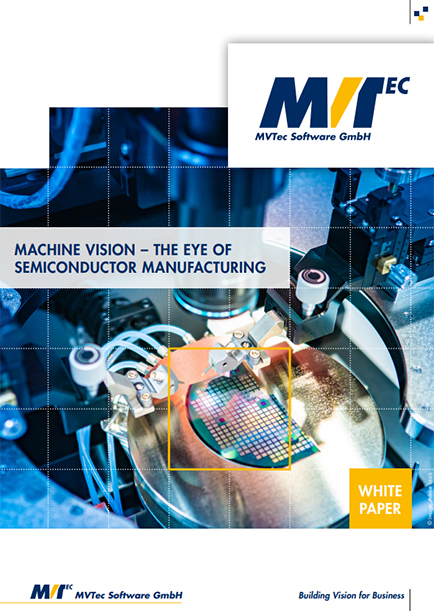
PROCESSING. PLEASE WAIT...


White Paper: MVTec Software GmbH
Introduction
Semiconductor manufacturing is not brand new anymore. Nevertheless, the global attention and demand for this “old economy” could hardly be greater. It is driven by megatrends such as digitalization, climate change and sustainability. However, manufacturing is highly complex, small-scale, and supply chains are subject to political, economic, and logistical dislocations.
Demand turbulence, triggered by the Corona pandemic, is causing semiconductor shortages in many industries. In addition, geopolitical forces and trade disputes are also tightening the supply of semiconductors. And finally, an imbalance between supply and demand is resulting from the sharp increase in demand in the consumer electronics sector. Since the start of the Corona pandemic, demand for 5G phones, laptops, and other consumer electronics for the home office has grown rapidly. At the same time, cars are increasingly becoming true computers on wheels, relying on electronics and semiconductors to power battery management, driver assistance systems, and consumer electronics.
To ensure the availability of semiconductors and to become less dependent on supply chain disruptions, semiconductor manufacturing capacity is currently being rapidly built in many regions of the world. The production of semiconductors is complex and involves more than 1,000 different process steps. The construction of production facilities is correspondingly complex and sensitive. In addition, the individual manufacturers of semiconductors have also implemented different processes in their production. There are also different types of wafers and chips, which place different demands on production. Thus, there is no such thing as a uniform semiconductor manufacturing process. This means that flexible technologies are needed for the industry that can quickly add value despite different processes. One such key technology is machine vision. The advantage is, in particular, that in the high-precision production of semiconductors, the numerous necessary inspection and alignment processes can be automated and carried out with high precision.


 2025 All Rights Reserved | by: www.ciowhitepapersreview.com
2025 All Rights Reserved | by: www.ciowhitepapersreview.com